
Winter's long dark nights are all the excuse you need to hibernate with a good outdoor book, or preferably several, to relive sunny adventures or plan next year's trips. From guidebooks to biographies, mountain running to outdoor fashion, 2024 was a great year for inspiring new titles. With Christmas on the cards, here's our pick of the books we've most enjoyed over the last year - perfect prezzies for the outdoor people in your life.
Dan Bailey
Wild
Climbing All of Scotland's Munros in a Single Winter Season
by Kevin Woods
You could probably fill a few shelves with books dedicated to the Munros, but among all these titles Wild is a real stand-out. Documenting the third (at the time) round of all 282 Scottish 3000-foot hills within a single winter season, it's a relatably readable record of a remarkable achievement, and a homage to the hills in their grittiest but most rewarding season.
Over 2019-20, Kevin Woods set himself the huge task of a winter Munro round, a physical and logistical feat on a grand scale. We're used to seeing big hill records knocked over by capable athletes, but this round was no mean feat by any standards, demanding mountaineering competence, massive determination, and not a little luck. The resulting journey - sometimes in company or with some logistical assistance, but mostly alone - sounds like a wild ride, loomed over by the constant imperatives of short daylight and moody or often downright violent weather, and menaced towards the end by the approaching global emergency of Covid.
Kevin's unaffected prose is gripping, and as a reader you'll be immersed, following him out in all weathers (mostly awful), sharing his travails, his doubts and his moments of triumph. The photography is very 'real' too, perfectly capturing the balance of ming and magnificence that is the hallmark of Scottish winter.
This self-published book - now available in both hardback and paperback - should captivate keen walkers and winter climbers alike. It is by miles the most engrossing thing I've read about hillwalking all year.
The Cairngorms & North-East Scotland
by Anne Butler, Iain Young & Heather Morning (Scottish Mountaineering Press)
Hillwalking guidebooks tend to be full of routes, but the Scottish area guides from the SMC are something quite different, drilling into the detail of a particular region to offer a deeper appreciation for connoisseurs of place. The first of this series to be re-done in the publisher's now signature design-led style, The Cairngorms and North-East Scotland is much more than just another book of walks and atmospheric photos - though yes, you do get those too.
From geology to history, nature to points of interest, there's a wealth of information here. You'll find two whole pages devoted to the Shelterstone (the howff, not the crag); notes on all the major bothies; even a full page on trig points. If there's something noteworthy to be said then the chances are the authors, all local experts, have it covered in the book.
I love that there's a whole chapter devoted to the main passes and through-routes, since these are a defining feature of the area; likewise the section summarising long-distance trails and extended hill days such as the Cairngorm 4000ers, which will be useful for those thinking bigger than individual summits. Use it to supplement your walking trips and you've got a fantastic window on the region, a resource that should really help to deepen your knowledge and appreciation of Scotland's North-East.
Ethel
by Helen Mort (Vertebrate Publishing)
Who was the wonderfully named Ethel Haythornthwaite? Ignoramus that I am, I'd never heard of her, much less appreciated her significance, before reading Helen Mort's rich and beautifully crafted biography. It's a fair bet I'm not alone.
And yet we owe her so much. Through tireless advocacy from the 1920s to the 60s she helped establish several major conservation milestones that underpin the countryside conservation, public access and National Parks without which Britain would be immeasurably poorer today. Her work helped establish the UK's first green belt, secured the Peak District's Longshaw Estate for public benefit, and helped lead eventually to the National Parks and Access to the Countryside Act of 1949, a moment of seminal significance to outdoor life in the UK.
A Sheffielder herself, a fellow poet, and a fierce lover of the Peak, Helen Mort shares much with Ethel Haythornthwaite, and the strength of her affinity really drives the book. Rather than a conventional chronological biography, she has written something looser and more creative, interspersed with poetry, narrative passages, and a one-sided imagined correspondence from Mort to her subject. Ethel is an inspiring joy of a book, and hard to pigeonhole.
This gentle but persuasive celebration of a quiet heroine of countryside conservation hits the shelves at a time when highly consequential national decisions on land use and planning once again dominate the agenda. As we stride into the future, books like Ethel (and there aren't many) offer lessons we might carry with us from the past.
The Way of the Hermit
My 40 years in the Scottish wilderness
by Ken Smith with Will Millard (Pan Books)
Hills aren't just for visiting - some folk actually live there. Have you ever fantasised about going off-grid, getting back to basics and back to nature? Taking those imaginings into reality, Ken Smith did just that, setting up home far from roads and habitation in a pine wood beside Loch Treig, where he built a wooden cabin and eked out a productive vegetable garden from the poor Highland soil. Four decades on, he's still going.
Humane, humorous and thoughtful, this account, co-written with Will Millard, is a captivating bit of writing. It's a remarkably tough life, and clearly takes a special kind of person, but if you're picturing a misanthrope lurking in his den then you may be pleasantly surprised. Now in his mid 70s, Ken Smith seems to be facing the challenges of ageing in such a setup with honesty and insight. Why put himself through it? Let's allow him to explain in his own words:
"There can be times when it is hard work out here and it can be uncomfortable, but it is an insignificant price to pay for peace" he writes. "The faint sounds of a lapping loch and the burn water tumbling down the slope. The hush in the trees, broken by the occasional train rattling on the tracks; the death crackle of the last piece of wood as it dissolves into ashes. We do have our place in the natural order of things, but it isn't the one most think..."
A bit of a cheat for our list perhaps, since it was first published in 2023, but in my defence the paperback edition came out this year - and I'd really recommend it.
Winter Climbs in the Cairngorms
by Blair Fyffe & John Lyall (Cicerone)
Another northeast Scottish book, and one more addition from 2023 sneaking into this year's selection - but a book I've only latterly received to review - the Cicerone guide to Winter Climbs in the Cairngorms is now in its seventh edition, and fiftieth year of publication. They've clearly been doing something right!
With a pocket-sized format and a page count-saving, cherry-picking approach to venue and route selection, this book - as with its sister title to Ben Nevis and Glen Coe - is a much more portable alternative to the SMC's chunky winter climbing guides, and thus offers something usefully different. Keen local climbers might like to have both, while if you're an occasional visitor only looking to do the obvious classics in the popular locations, then Cicerone alone should have you fully covered.
The venues and routes selected by the guide's expert authors Blair Fyffe and John Lyall offer something for everyone, from easy access mixed in the Northern Corries and Cha-no to backwoods adventures in the wilds of Braeriach and Beinn a' Bhuird. The Lochnagar massif, Glen Clova and Meggy round off a full run-down of the biggest and best that the area has to offer.
While some of the action photos are great, others feel a bit so-so, and not altogether recent; and the cover price of £25 must be at the upper end for a pocket-sized guide; but these are minor niggles on what should prove to be a very handy book. I used one of its predecessors extensively for many years, as evidenced by the gaffer tape holding its plastic-bound cover together, and for the quantity of information and the quality of its presentation, the latest iteration is an improvement in every way.
One very clever addition not seen in SMC guides is the use of symbols to represent the types of climb (turfy mixed, rocky mixed, cascade ice etc), information that is really good to know before you go - though it has to be said that they're a bit small to discern without constant reference to the key on the cover. Topos are uncluttered and attractive, the occasional OS map extract aids crag location and approach, and the layouts feel clear and logical. Overall this book seems very usable in the field, which is exactly what you want if you're taking the old school analogue approach and fishing it out of a pocket halfway up your route. Roll on winter...
For our review of its sister title see here:
Tomo Thompson
Between a Loch and a Hard Place
Life, History, Climbing & Mountain Rescue in Glencoe
by Davy Gunn
Davy Gunn is a stalwart of Scottish mountaineering and was a member of Glencoe MRT for 37 years. This is his self published memoir, covering nigh on seven decades of life in the village of Carnoch (better known as Glencoe): A hard life; One spent outside from the earliest age. Failed, bullied and beaten by the education system, Davy hefted to the waters, forests and mountains of the Glen.
The mountain adventures and epics herein will whet the appetite of any keen mountain goer but they are offset by the stark honest truth of the risks, damage and death that mountains and rescue in the mountains imposes on self, family and friends. Humour, some of it black, abounds, as does a very very keen eye for nature, people and place.
As well as living in the Glen during the period when visitor numbers soared to unmanageable levels, the author was deeply committed to Glencoe Mountain Rescue Team.
There is nothing deeply philosophical about the book, and this would be unnecessary. It is the memoir of a mountain man, a professional mountaineer and a rescue team member.
It's also a call to arms for those of us that 'education' has failed. It urges us to find our calling later in life and proves that we can achieve great things – including academic achievements – despite our formative years.
The author himself does opine that the reader may want to skip the opening chapters (on the history of the Glen). I'd urge you not to. I'd also suggest reading the book with a copy of the SMC guides (summer and winter) open to truly appreciate the scale of some of the routes and rescues.
There is as much to be learned from the breakdown of physical and mental health herein, as there is from the mountain nouse.
For some the adage of 'learning from experience' gained the hard way over decades of craft and toil still rings true in mountaineering despite the instant gratification era of social media. I'd go as far as to say this book is essential reading for anyone deeply interested in people and place, as well as mountaineering or mountain rescue, but would caution that the real life costs of real experience are laid bare within its pages.
It is an honest and remarkable book.
'Between a Loch and a Hard Place (Life, History, Climbing & Mountain Rescue in Glencoe)' is published and distributed by the author. Priced £12.95 it's available by emailing Davy Gunn
Natalie Berry
Moving the Needle
How an Average Climber can do the Hardest Route in the World
by Dave MacLeod (Rare Breed Productions)
The long-awaited autobiography by Dave MacLeod charts his journey from inner-city Glasgow to establishing what was then the world's hardest trad route - Rhapsody E11 7a, the first of the grade - at Dumbarton Rock and becoming a professional climber. Includes an engaging foreword by Dave 'Cubby' Cuthbertson, which provides extra context to MacLeod's climbs.
While MacLeod has written previous books focused on training, injury prevention and management, Moving the Needle gives the reader an insight into the man behind the motivated climber. Avoiding any pretence or egotistical fanfare, MacLeod attempts to unpick the combining elements of nature and nurture from his upbringing that shaped him as a world-class athlete. MacLeod's honest introspection regarding personal challenges and how he harnessed his strengths and honed his weaknesses through hard graft makes for a refreshing and inspiring read.
Although describing his old self as 'an average climber' could raise eyebrows, MacLeod outlines how his exceptional mindset and approach to training and problem-solving elevated his performance. At times, you'd be forgiven for forgetting that you're reading the story of a developing trad and winter climber and not a budding Olympic athlete. It quickly becomes clear how MacLeod's meticulous approach to training and projecting has in part been informed by his sport science and nutrition studies.
Among the most interesting passages are his descriptions of formative experiences on and off the rock with other people, who each imparted lessons in life and climbing. Of course, as in any life story, there are also elements of serendipity which altered his trajectory: What if he hadn't been bored at home and plucked that map off the shelf? What if that education officer had spoken differently? What if that day on Ben Nevis had resulted in a different outcome? What if he hadn't met his wife Claire, with her unwavering support (and exceptional belaying skills)?
MacLeod also weaves in socio-political elements relating to risk, education, health and wellbeing - both physical and mental - and how we often confine ourselves to preconceived ideas and ingrained ways of thinking, limiting our potential.
A motivating read for those wanting to improve their grade, which also provides plenty of depth and food for thought beyond climbing and training.
Climbing Days
by Dorothy Pilley (Canongate)
This is the eagerly anticipated new Canongate edition of pioneering climber and mountaineer Dorothy Pilley's classic 1935 book.
Pilley made significant ascents in the UK, the Alps and beyond and was a founder, President and Journal Editor of the Pinnacle Club for women from 1921 onwards. Eschewing society's norms and traditional gender roles, Pilley's exploits in the hills were anathema to middle-class Victorian life in London.
From first ascents and groundbreaking explorations in Wales - on Tryfan, Lliwedd, The Devil's Kitchen and Cwm Idwal - to the Lake District and Skye, Pilley went on to make ascents of the Charmoz, the Grépon, the Dent du Géant and a traverse of the Drus - all in her first alpine season. She initiated the first unguided party of women on a traverse of the Egginergrat and the Portjengrat, and climbed the Zmutt ridge of the Matterhorn. Alongside her husband I. A. Richards and French guide Joseph Georges, Pilley achieved the second ascent of the North East ridge of the Jungfrau in 1923, the North ridge of the Grivola in 1924 and the coveted first ascent of the North ridge of the Dent Blanche in 1928 - the pinnacle of the couple's climbing careers.
Pilley died in 1986 at the age of 92. Throughout her long and storied life, she diligently kept diaries and notes about her climbs and the emotions surrounding her escapades in the hills, which formed her memoir Climbing Days. 75 years later, in 2010, the little-known memoir was discovered by Dan Richards — Pilley's great-grand-nephew — who retraced her steps on a journey from Cambridge to the summit of the Dent Blanche. Richards' 'companion piece' publication of the same name, Climbing Days, helped to rekindle interest in Pilley's adventurous life and achievements, prompting this reprint.
Between a gorgeous and colourful new cover, Pilley's adventures are framed by a new foreword by Richards and otherwise untouched, organised with amusing chapter summaries that give the reader a taste of the antics and hi-jinks to come. A delightful, humorous and inspiring read for lovers of mountains and mountain literature.
Smooth
Movement Principles and Techniques for Climbing
By Xian Goh
Written (and self-published) by London-based climbing coach Xian Goh, this is a fun and easy-to-follow training book for climbing which focuses on technique and movement, rather than strength.
With a plethora of information available online in articles and videos about climbing, it's easy to assume that (another!) book dedicated to improving your game would be unnecessary, but Smooth takes a different approach to both training and teaching.
Rather than sharing tips on how to get stronger and how to climb harder, author Xian Goh concentrates on how to climb better. Her simple descriptions of the fundamental principles of climbing movement and back-to-basics approach is helpful for beginners through to elite-level climbers.
Goh's philosophy is based around five major movement principles, which will make your climbing more efficient and - as the title suggests - smoother. If you've ever envied another climber's grace on the wall or rock, Goh's explanations, photos, demonstrations and 77 technique drills will get you from sack of spuds to smooth and stylish. The book also comes with video material to enhance learning.
Topics covered include: creating stability, generating movement, body positioning, slabs, overhangs, footwork, gripwork, breakdown of specific techniques, route reading and problem solving.
A perfect Christmas gift for a new climber, a keen improver or weekend warrior — indeed anyone looking to earn more style points and push their grade without necessarily having to slog through hard physical graft. It's all in your feet and hips, and practice makes perfect!
Mountain Style
British Outdoor Clothing 1953-2000 (Isola Press)
by Henry Iddon and Max Leonard
This stunning coffee-table-quality book with both photographs and words retraces the history of British outdoor and mountaineering clothing from 1953-2000, alongside snapshots of the top brands' (now very dated, sometimes sexist, but at times comical) advertising campaigns.
Are you nostalgic for natty nylon? Do you have fond memories of fleece? A penchant for gaudy garments? This book is a visual feast of vintage outdoor fashion, filled with history and - depending on your taste - elements of style.
How did we go from rudimentary woolly jumpers and army surplus clothing to fancy textiles and the best technical fabrics that materials science can offer?
The book is as much about the clothing as it is about the people who wore and achieved great things in them (from the French Alpcan duvets on Everest in the 1950s to Don Whillans' Annapurna Jacket Doug, Scott's Javlin pile jacket, Bonington's bright Berghaus jackets and Alison Hargreaves' iconic green and blue Sprayway wind suit from the 1990s). Climbers influenced the clothing, and in turn the clothing influenced their feats.
As the gorpcore trend continues to grace the fashion houses and high street, the book also helps readers to understand how the practical and aesthetic qualities of these clothes diffused into the mainstream.
The product of a popular crowdfunding campaign, the concept for the book clearly appealed to the gear geeks and fashion (un)conscious and would make a great gift to read in your new Christmas clobber by the fire.
Rob Greenwood
Northern Horizons
by Will Herman (Scottish Mountaineering Press)
This one is a bit of a curveball, as it's not actually out for Christmas, but it is available to pre-order - and I would highly recommend that you do, because it is without doubt the best book that I have read throughout 2024 - and potentially ranks alongside my all-time favourites.
Northern Horizons is many things. On the surface, it looks like it might be a guidebook, but - as John Fleetwood says so aptly within the foreword - "this is no guidebook in the traditional sense; rather, it is a series of memoirs that convey a keen sense of place and motivate the reader to make their own personal acquaintance with the hills described therein".
Within its role as a guidebook, the author - Will Herman - successfully provides the reader with an inspirational and eclectic blend of routes, centred primarily around Scotland. These routes are far from spoon fed, so if you're after turn-by-turn descriptions - look elsewhere. The focus is firmly on the experience of being out there, in the elements, with map in hand.
There is an ongoing interplay throughout Northern Horizons between what we - as people - bring to the mountains and what the mountains, in turn present us with - adventure, challenges and memories. The author has a lifetime of such experiences to draw from, not just as a runner, but also as a climber, mountaineer, mountain biker and sea kayaker. These different activities are, in my mind, key to what gives the book such a unique feel, as each different discipline offers an alternative perspective on the mountain environment.
Something else that resonated was the author's appreciation and understanding of the history of fell/hill running. Something I've noticed whilst climbing is that knowledge of who's gone before you can enrich an experience, turning what might have just been another route into something much more meaningful.
Whilst I have only received and read a low resolution pdf copy of this book, something else I am sure of - from having seen other publications from Scottish Mountaineering Press - is that the quality of the final production is going to be nothing short of spectacular. As far as publishers go, Scottish Mountaineering Press are setting new standards for quality, and I can't wait to receive a hard copy of this book once it's available.
Running Challenges
by Keri Wallace (Vertebrate Publishing)
Running Challenges is a very different book to Northern Horizons, but there's definitely space for both on my bookshelf, as they serve very different purposes. It is best described as a book of ideas and one which anyone with even the vaguest interest in running will swiftly be drawn into. It's something to dip in and out of, and would be great to peruse throughout the Christmas holidays whilst looking for inspiration for 2025. It's also something I could see using as a resource whilst travelling, as it's got a good geographic spread.
The book covers England, Scotland and Wales, with a bias towards the more mountainous areas, but not exclusively so, with some lovely countryside and coastal runs thrown into the mix too. That's a particular aspect of Running Challenges that I like, because it feels like it tries to offer a 'greatest hits' of the diverse landscapes we have on offer. It's also similarly diverse in the styles of running, with everything from trail through to fell. In the same vein, the book blends everything from marked races (e.g. Parkruns) with organised fell races and long-distance challenges.
In terms of distance, the shortest routes featured are 5km and the longest 1,400km, although the majority sit between the 5-30km mark. As a result, there's plenty that'll be achievable for everyone, then a load that are more aspirational, and some that'll likely transcend into the 'never, ever let me do that' category.
The Climbing Bible - Managing Injuries
by Stian Cristophersen (Vertebrate Publishing)
Getting injured is awful, which is why it's worth being as proactive as possible in order to prevent it from happening. However, when you do get injured - what's the best way to treat it? The Climbing Bible - Managing Injuries focuses on exactly that, as well as how best to rehabilitate, focusing on the most common injuries climbers are likely to receive.
The author, Stian Christophersen, balances the information required to do this well, presenting it in just the right level of detail. It's broken down into manageable sections, uses words that we all understand, and supports those words with relevant imagery. It would be all too easy for something on this subject matter to become a scientific paper, impregnable to anyone who isn't specialised, but he has done a great job of making it as clear as possible, for as many people as possible.
The book is divided into three sections, with the first outlining the different factors involved in injury and rehabilitation, including sleep, training load, warming up, differences in age/gender and strength training. The second section goes into detail on the most common injuries experienced by climbers and looks at how not only to rehab, but also how to prevent injuries from happening in the first place. Finally, the third section explores a subject which I haven't seen written about before - the science of pain, and what pain actually is.
Whilst The Climbing Bible - Managing Injuries will be of most interest to those who are injured, its appeal should extend to those who aren't, but want to make a conscious effort not to become so. That's pretty much all climbers, then.
Pen Llŷn
by Pat Littlejohn and Mick Lovatt (The Climbers Club)
Pen Llŷn (aka. the Llŷn Peninsula) is home to some of the best or worst routes in the British Isles, depending who you ask. It's an area that sits at the adventurous and esoteric end of the rock climbing spectrum and is famed for its serious, loose rock 'classics' - something that was explored in an article we recently published.
That said, there is more to the Llŷn than many will be aware of, because whilst there are undoubtedly a whole load of loose sea cliffs, there's also some less loose sea cliffs, and some that are actually quite solid. There's also a whole host of inland climbing too, both in quarried and natural outcrops, which have historically felt a bit forgotten, and are definitely deserving of more attention. There's even some bolted rock climbs, which is something I never thought I'd say for an area synonymous with adventure climbing, but such are the times we live in…
The previous guide didn't give away the area's secrets easily - or at all in some cases. Much though I loved it, there's no denying it left a lot to the imagination, with the lack of topos and stars definitely adding to that sense of adventure, to the extent that you often ended up either off route - or on another route entirely!
With full colour and full page topos throughout, the new guidebook lifts the lid on the spectacular and often quite chaotic beauty of the crags that up until now remained unseen by anyone who'd not been there. A lot of these crags are far from easy to photograph too, so all praise goes to the authors - Pat Littlejohn and Mick Lovatt - for going to great lengths to get them.
On the note of the authors, there are few - if any - as experienced as both Pat and Mick when it comes to both the delights and the horrors of the Llŷn. Something that the Climbers Club were keen to stress with the publication of this new guide is how much new rock/routes have been developed and how a lot of this is a lot more solid than the general reputation of the area would suggest.
Whilst the Llŷn will always be at the specialist end of the rock climbing spectrum, to those specialists this will be an incredibly inspiring resource and one that opens doors that were previously kept closed by the absence of information.
Dan Bailey
The Search
by Paul Besley (Vertebrate Publishing)
A serious fall while solo walking in the Lake District - it sounds harrowing even in the telling - prompted Paul Besley to join his local Mountain Rescue Team. Upping the commitment by several factors more, he then chose to become a search dog handler, a role that sounds not so much like a side project as an all-consuming passion. The Search is the story of this journey.
With border collie pup Scout in hand (though it's not always clear who's in charge) Paul sets out on the long and winding road of training; and if you were in any doubt what a painstaking, absorbing and at times emotionally draining process this is, The Search will soon set you straight. As a pathetic dog owner who can barely keep his mutt to heel I was awed by the systematic trial-and-error that goes into building a fully fledged dog-and-handler team, a process that clearly takes a special animal and a human with deep reserves of patience and resilience. It's not for every dog or person - probably not one in ten thousand - but when it works the eventual result is a tight unit based around a profound inter-species connection, dog ownership taken to quite a different level.
Written with raw honesty, The Search is very human, but also demonstrates an intuitive understanding of canine psychology, and thanks to this the reader gets to know Scout almost as well as we do Paul himself. He sounds like quite a dog.
You don't have to be a dog fan, or particularly interested in Mountain Rescue, to read and enjoy The Search. When it comes to finding the lost or injured, search dogs are one of the most effective measures in the Mountain Rescue toolkit, and I think all climbers and walkers owe these volunteer teams at least the debt of acknowledgement. One day it might be you or me who'll find ourselves needing a Scout-and-Paul.





























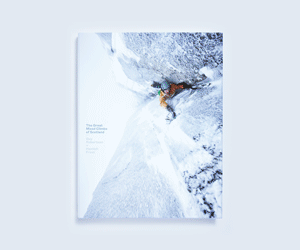








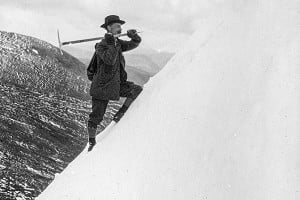
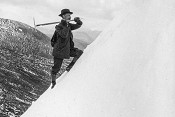
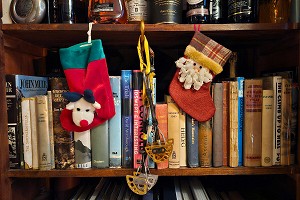


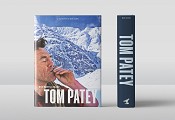
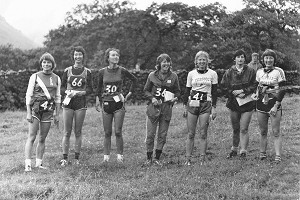

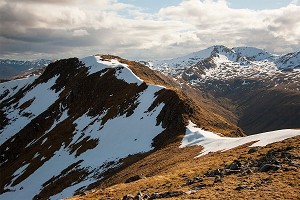
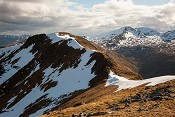

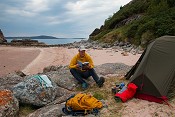
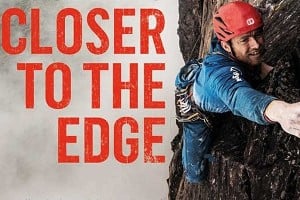

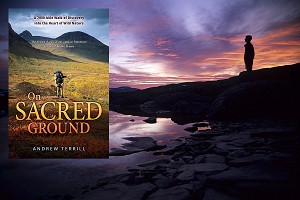
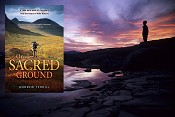

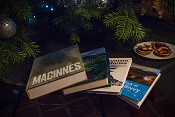
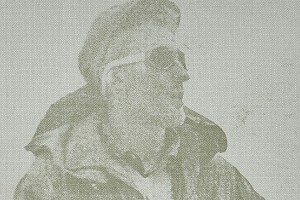
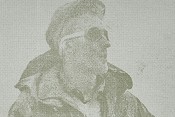
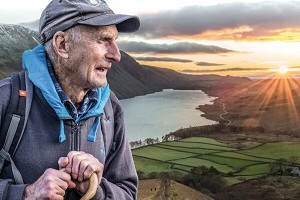


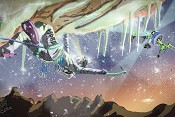
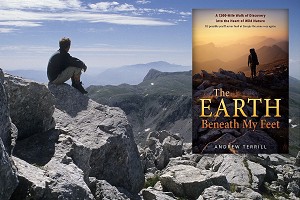
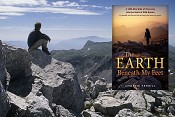
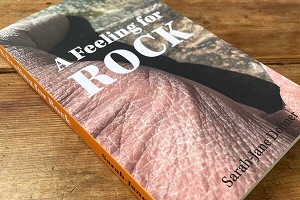
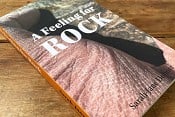
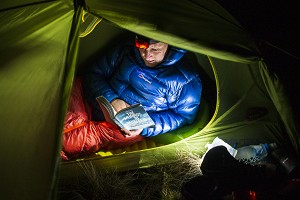
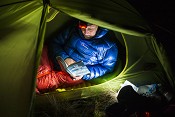
Comments
The Llyn explosion continues, a new routes supplement is pretty much already underway!